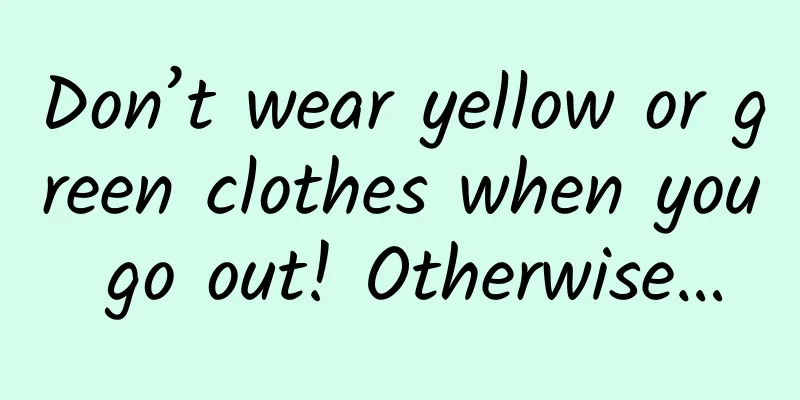In just 20 minutes, the 8-year-old boy's entire eyeball was dissolved, leaving him blind for life! If you have this thing at home, throw it away immediately

|
Expert of this article: Yang Chao, PhD in Chemistry, University of Chinese Academy of Sciences Recently, a piece of news about desiccant went viral on parents’ WeChat Moments. In just 20 minutes, the 8-year-old boy's entire eyeball was dissolved! He was blind for life! News screenshots The incident started when the child, for fun, put a small packet of snacks into a beverage bottle filled with water. Unexpectedly, it exploded as soon as it was put in. For a moment, the child felt something entered his right eye, which burned him very painfully, and then he could no longer see. The culprit behind all this is desiccant. So what exactly is a desiccant? Why is it so harmful? Let’s take a look… What is a desiccant? A desiccant is a substance that can remove moisture from moist substances or keep them in a dry state. Desiccant can extend the shelf life of food and is also commonly used to dry electronic products so that they do not cause metal oxidation in a humid environment. Common desiccants in daily life can be divided into two categories according to the adsorption method: one is chemical desiccant, such as calcium oxide, calcium sulfate, etc., which dries by chemical reaction with water; The other is physical desiccant, such as silica gel, activated alumina, activated carbon, etc., which dries by physically adsorbing moisture. What are the common desiccants in life? Calcium Oxide Calcium oxide, also known as quicklime, is a white or grayish white block or powder. It can absorb a large amount of water vapor at a low humidity level. The moisture absorption rate is about 15%-24%. It reacts chemically with water to produce powdered calcium hydroxide, which is slaked lime. This type of desiccant is used in foods such as "fresh scallops" and "nori" to prevent the food from getting damp and affecting its taste. Compared with many other desiccants, calcium oxide aqueous solution is highly alkaline and corrosive, which can irritate and corrode mucous membranes and is currently being phased out. Silica gel desiccant Silica gel desiccant is composed of small silica beads and is translucent. Silica gel has a very good drying effect below 25°C, but as the temperature rises, silica gel will gradually lose its ability to absorb water. Silica gel desiccants are popular because they are non-corrosive, non-toxic, and approved for use in food and pharmaceutical packaging. They are also commonly found in cosmetics, apparel, and even cat litter. In addition to its ability to absorb water, silica gel can also absorb aromatic hydrocarbons, alcohols, ammonia, olefins, paraffins and dienes, and can be used to "dry" a variety of products. Silica gel desiccant Montmorillonite desiccant Also known as bentonite, it is a layered mineral composed of hydrous aluminosilicate containing a large amount of montmorillonite, which is slightly coarser than silica gel. It is a naturally occurring porous adsorbent that is made into a desiccant by drying and activation. Under normal temperature and humidity conditions, the moisture absorption rate of composite clay desiccant is about 30%, but its drying effect is limited at high temperatures. It is a green and environmentally friendly product that is non-corrosive, non-toxic, and pollution-free. At the same time, due to its characteristics of absorbing moisture quickly and in large quantities and its low cost, activated clay is an excellent substitute for silica gel in all traditional packaging applications. It is often used in various moisture-proof fields such as electronic products, precision machinery, and military equipment. Molecular sieve desiccant Silica gel and clay desiccants are not very effective at drying at high temperatures and will release moisture back into the environment, while molecular sieve desiccants can capture water vapor above 225°C and absorb moisture more quickly and effectively than silica gel or clay. However, molecular sieve desiccants do not exist naturally and have high manufacturing costs, so they have not been widely used in daily life and are usually used in scientific research and other fields. Calcium sulfate desiccant Calcium sulfate desiccant, made from dehydrated gypsum, is non-toxic, chemically stable, non-corrosive, non-disintegrating, and will not release its adsorbed moisture when exposed to high ambient temperatures. The cost is low, but its moisture absorption capacity is also low, and it can absorb up to 10% of its own mass of moisture. Therefore, it is a desiccant that is rarely used and has a short service life. What should I do if I accidentally swallow desiccant? The packaging tape of desiccant usually has words such as "Do not open", "Do not eat", and "Do not come into contact with water". Silica gel or clay desiccants are not toxic, so there is no need to panic if they are accidentally ingested. Apart from absorbing moisture, they will hardly have any other reactions. After they "pass through" the gastrointestinal tract and are excreted, they are almost exactly the same as when they were eaten. However, if you eat too much silica gel or clay desiccant, it will cause dry mouth and you will need to drink water to replenish water in time. The chemical reaction of calcium oxide when it comes into contact with water will release heat, and the resulting calcium hydroxide is alkaline. If accidentally ingested, it will cause burns and corrosion to the oral cavity, upper respiratory tract, and digestive tract mucosa. Since calcium hydroxide is alkaline, can I drink a lot of vinegar to neutralize it? Of course not. Because the heat released by the neutralization reaction can aggravate stomach damage, people who accidentally ingest calcium oxide should be given water or milk immediately to neutralize a small amount of calcium hydroxide through stomach acid. Large amounts of calcium oxide can cause deep burns and necrosis of the gastrointestinal mucosa. Complications often include esophageal and gastric perforation, tracheal and esophageal fistulas, and gastrointestinal bleeding. However, because calcium oxide is too unpalatable, with a slightly bitter, alkaline taste, and a strong burning sensation on the tongue when eaten, people generally do not accidentally ingest it too much. What should I do if desiccant accidentally gets into my eyes? Parents should pay special attention to: Be careful not to pour quicklime desiccant into a bottle of water out of curiosity or fun. This is very dangerous and may cause explosion or splashing. If lime particles splash into the eyes, they will absorb moisture from the cornea and continue to release heat to burn the cornea. The resulting slaked lime is highly alkaline and will also corrode the cornea, causing perforation and leading to blindness. If quicklime splashes into your eyes, you should immediately rinse your eyes with plenty of water from one side of the nose to the eye for at least 10-15 minutes, and then go to the hospital for medical treatment immediately. How to handle desiccant correctly? In households with children, the safest approach is to throw away the desiccant after opening the package. Although there are many types of desiccants, they all belong to dry garbage and can be thrown directly into the "dry garbage" trash can. The desiccant can also be reused to dry some daily necessities: Storing it together with photos can effectively prevent old photos from sticking to each other; Place it at the bottom of the jewelry box to help maintain the luster of the jewelry; It can prevent pet food from spoiling and becoming wet, thus extending the shelf life of pet food; You can dry a cell phone that has been soaked in water (just like putting it in raw rice). The pictures in this article with the "Science Popularization China" watermark are all from the copyright gallery. The pictures are not authorized for reprinting. |
>>: How does depression destroy a person?
Recommend
There is a secret hidden in this position on the RMB, remember to touch it when putting the red envelope in!
Today is Chinese New Year's Eve. Are you read...
Ruan Yifeng: Why is the memory address of the master boot record 0x7C00?
The "Computer Principles" textbook says...
Why is aging called "old age and yellowing of beauty"? Can premature yellowing be avoided?
Once spring is over, the beauty will fade away. W...
Apple's successes and failures in 2015
[Abstract] In 2015, Apple's smartphone profit...
Apple iOS 15/iPadOS 15 developer preview/public beta Beta 7 released
On August 26, Apple pushed the iOS 15/iPadOS 15 d...
The orange peel I bought turned blue. Is it moldy? Can I still eat it?
Wogan is a citrus fruit that everyone likes. Its ...
Collection of cases of rapid increase in followers | Inventory of Douyin celebrities in 2019
In the last few days of 2019, the cold wind hit, ...
If you get bitten, you will go into coma and shock! Some people have died from this. If you see it, please stay away immediately!
It is summer now. In southern my country, a kind ...
"Ten o'clock classroom" 81 course series video + audio collection Baidu cloud download
"Shidian Classroom" is a leading knowle...
French auto parts supplier GM&S in trouble, PSA refuses further financial aid
According to foreign media reports, the French go...
How to build a live broadcast operation system from scratch?
I believe that friends in the To B circle should ...
Hupu product analysis report!
On June 6, 2019, Hupu Sports Community received a...
10 Latest and Promising UI Design Trends
Lately, I’ve been spending some time observing th...
Twelve sentences reveal that you are a miserable PR dog!
Just one sentence can expose you as a PR dog! &qu...
How do you start to create an offline event?
1. To organize a successful offline event , we ne...









